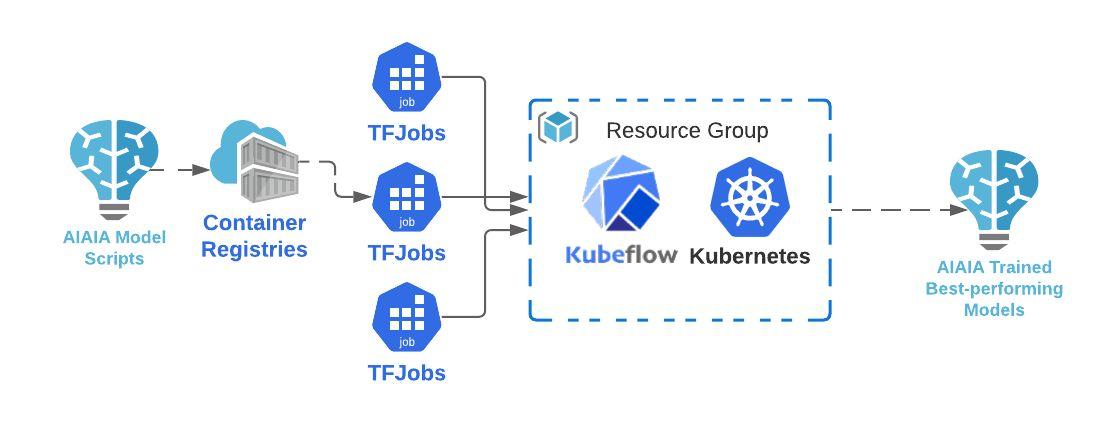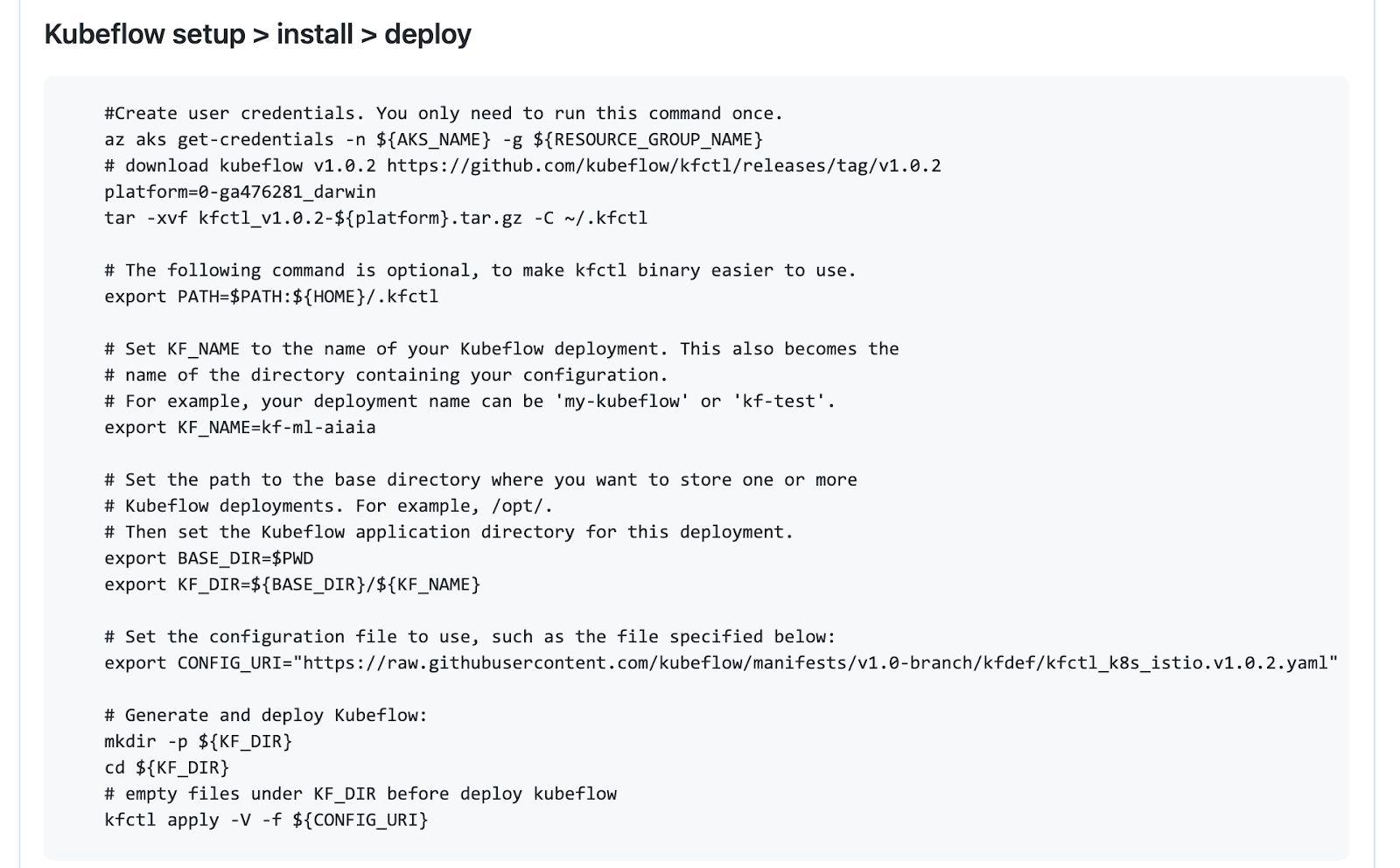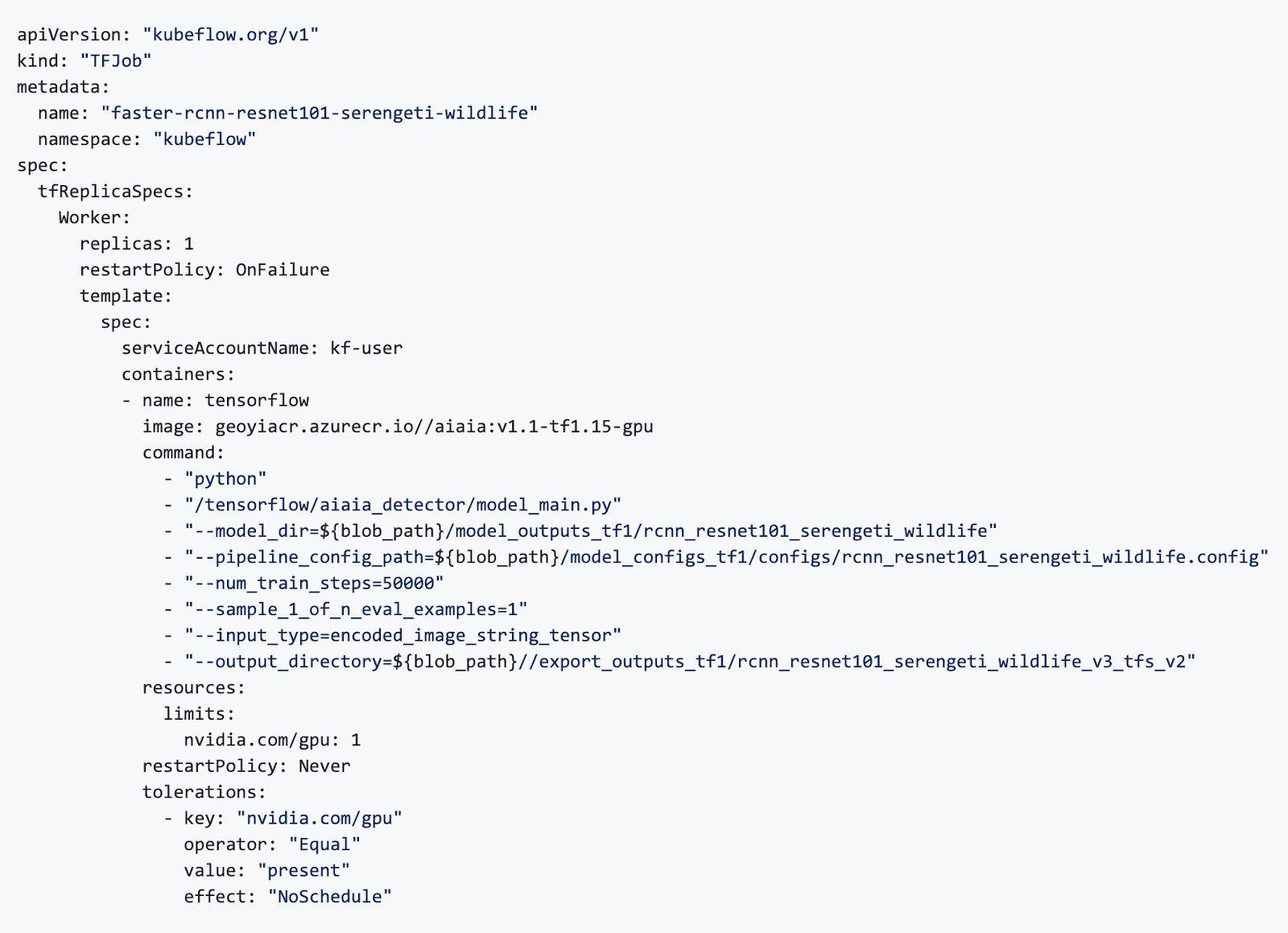Metodology and Results
Model Training and Experiment with Kubeflow
Kubeflow and Kubernetes have become standard toolkits in industry, allowing data scientists to train, deploy, and package machine learning models in a portable, scalable and efficient way. These tools are powerful and flexible enough to accommodate the complexities of applying models to geospatial aerial imagery. With these tools, the models can be deployed to any cloud computing environments, including Microsoft Azure or Google Cloud Platform (GCP). Kubeflow was originally developed by Google. We found Kubeflow documentation on GCP is more up-to-date than Azure’s, therefore, it requires more hacky ways to deploy Kubeflow and TFJob to Azure/GCP. As follow up work, we will work to make these same workflows available on Azure Machine Learning as well.

Training models on Microsoft Azure will require a few steps:
- Install and setup Kubernetes CLI, kubeclt1, on your local machine.
- Install Azure CLI and log in with your credentials. The Microsoft AI for Earth program provided Azure cloud credits for this project.
- Create a resource group and Azure Kubernetes Services (AKS) setup on Azure. Our Kubeflow model training and experiments were deployed to AKS. AKS provides continuous integration and continuous delivery (CI/CD), as well as enterprise-grade security and governance on Azure2. A GPU node pool can be added to the AKS for both AIAIA Classifier and Detectors model training.
- Azure Container Registry (ACR) must be set up. Model training scripts can be conterized and pushed to ACR for AKS to access later on when the model is deployed and ready to be trained with the AKS GPU node pool;
- Kubeflow setup and deploy.

- Store and host training dataset, pretrained model weights, and model configure files on Azure Blob Storage.
- Setup TFJob yaml file for model deployment.

__________________________________
1 "Install and Set Up kubectl | Kubernetes." 27 Nov. 2020, https://kubernetes.io/docs/tasks/tools/install-kubectl/. Accessed 27 Jan. 20212 "Install and Set Up kubectl | Kubernetes.""Azure Kubernetes Service (AKS) | Microsoft Azure." https://azure.microsoft.com/en-us/services/kubernetes-service/. Accessed 27 Jan. 2021.



